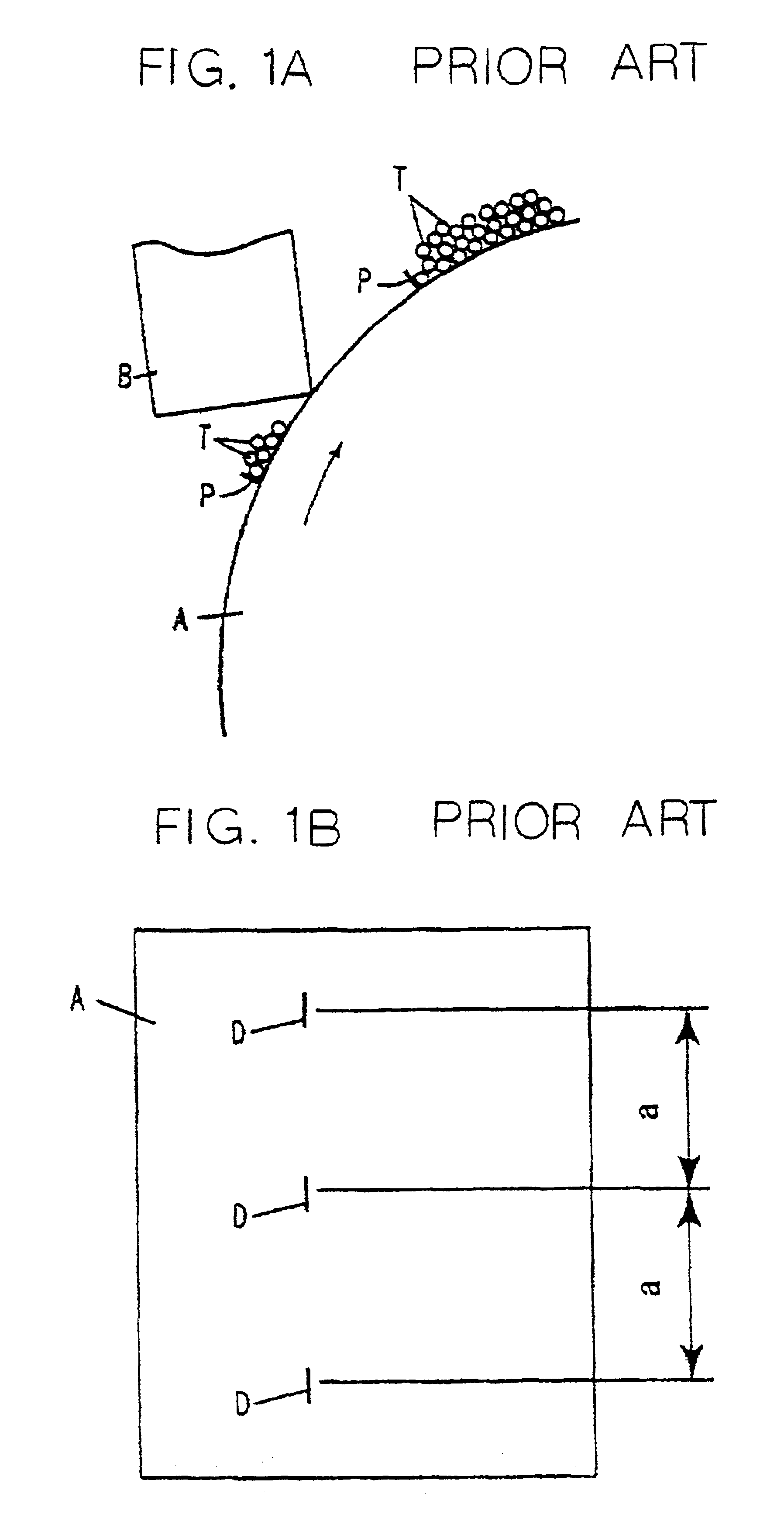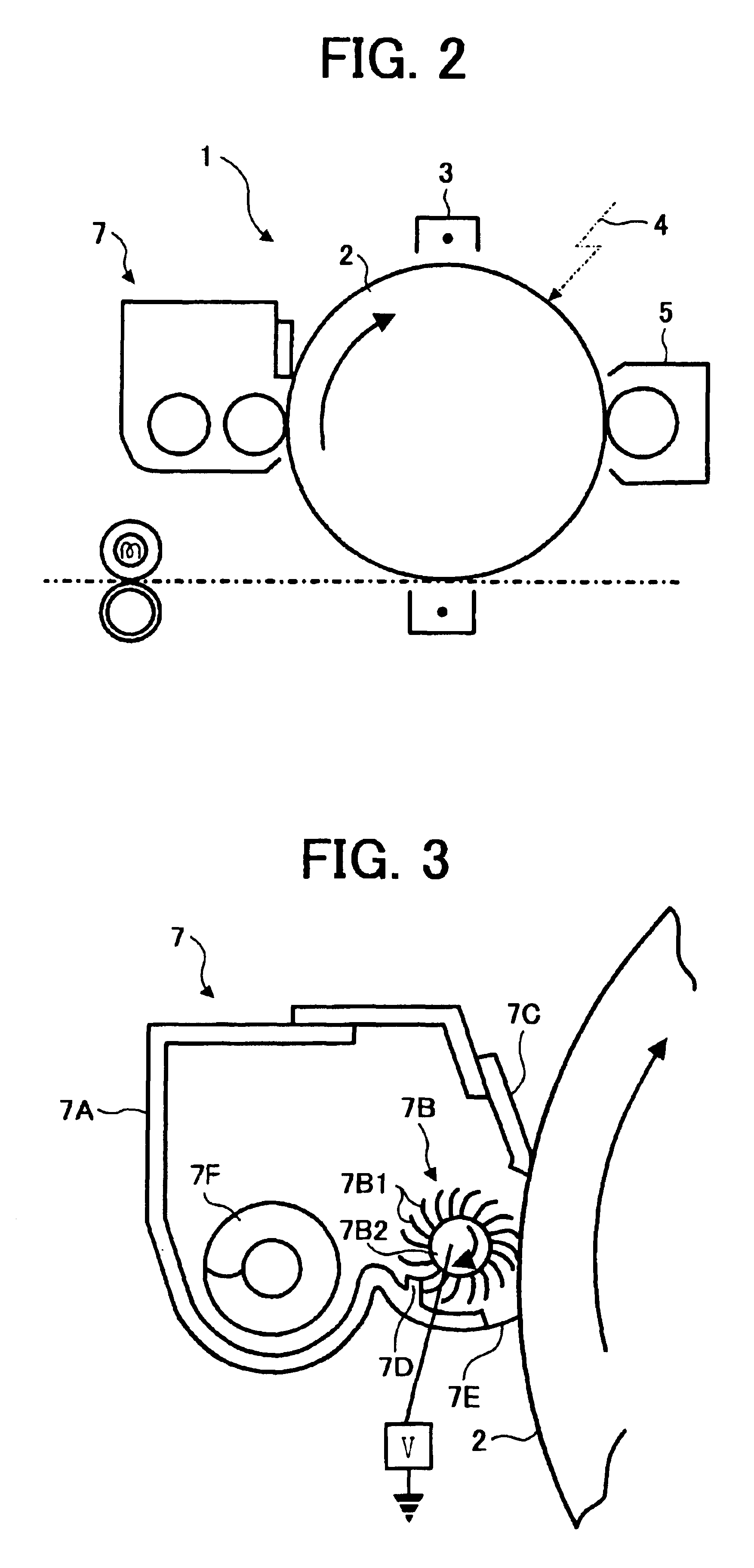Cleaning device and image forming apparatus using the same
a cleaning device and image forming technology, applied in the direction of vehicle cleaning, instruments, manufacturing tools, etc., can solve the problems of defective cleaning, inability to adequately remove residual toner, and inability to clean defective images
- Summary
- Abstract
- Description
- Claims
- Application Information
AI Technical Summary
Benefits of technology
Problems solved by technology
Method used
Image
Examples
Embodiment Construction
To better understand the present invention, the problem with the conventional cleaning system of the type using a cleaning blade will be described more specifically. A cleaning blade pressed against a photoconductive element cannot sufficiently remove toner having a small grain size and makes images defective, as stated earlier. This is because various additives added to toner and sheets are too small in grain size to be fully removed by the cleaning blade.
More specifically, FIG. 1A shows a cleaning blade B held in contact with the surface of a photoconductive drum A. As shown, assume that the cleaning blade F fails to remove toner grains T from the drum A, and that fine grains P of additives are separated from the toner T and sheets. Then, toner grains T with a small grain size is apt to accumulate around the above toner T and fine grains P. The toner grains accumulated are blocked by the fine grains P and cannot be fully scraped off despite the action of the cleaning blade B.
Toner...
PUM
| Property | Measurement | Unit |
|---|---|---|
| grain size | aaaaa | aaaaa |
| grain size | aaaaa | aaaaa |
| electric resistance | aaaaa | aaaaa |
Abstract
Description
Claims
Application Information
 Login to View More
Login to View More - R&D
- Intellectual Property
- Life Sciences
- Materials
- Tech Scout
- Unparalleled Data Quality
- Higher Quality Content
- 60% Fewer Hallucinations
Browse by: Latest US Patents, China's latest patents, Technical Efficacy Thesaurus, Application Domain, Technology Topic, Popular Technical Reports.
© 2025 PatSnap. All rights reserved.Legal|Privacy policy|Modern Slavery Act Transparency Statement|Sitemap|About US| Contact US: help@patsnap.com



